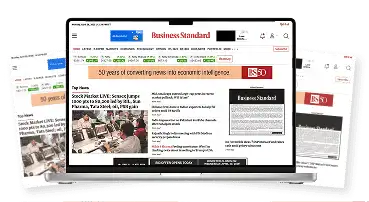"Not doing so (investing in infrastructure and skill development) could upend the government's flagship 'Make in India' programme, which aims to generate large-scale manufacturing employment," Crisil's Chief Economist Dharmakirti Joshi said.
The agency's research wing came out with a note spelling out the headwinds which make the government's target to double exports to USD 900 billion by 2020 from the present USD 470 billion an ambitious one.
Among the domestic factors, it identified declining competitiveness, infrastructural bottlenecks and labour market rigidity as the key issues which hurt exports.
India's exports remained in the negative territory for the 11th month in a row by registering a dip of 17.53 per cent in October to USD 21.35 billion.
Exports contracted due to steep decline in shipments of petroleum products (57 per cent), iron ore (85.5 per cent), engineering (11.65 per cent) and gems and jewellery (12.84 per cent) amid a global demand slump.
Crisil said that even as the exports are declining, the trade deficit has come down to 1.4 per cent in 2015 from 6.5 per cent two years ago, largely due to a correction in oil prices.
However, Joshi warned that this can be a "transient" factor, saying that while global sluggishness will keep exports subdued, a pickup in commodity prices can "bloat India's trade and current account deficit again".
The agency also dismissed some notions which are attributed for the dip in exports, like export destinations not doing well, prices of products declining and an appreciation of the rupee.
You’ve reached your limit of {{free_limit}} free articles this month.
Subscribe now for unlimited access.
Already subscribed? Log in
Subscribe to read the full story →

Smart Quarterly
₹900
3 Months
₹300/Month
Smart Essential
₹2,700
1 Year
₹225/Month
Super Saver
₹3,900
2 Years
₹162/Month
Renews automatically, cancel anytime
Here’s what’s included in our digital subscription plans
Exclusive premium stories online
Over 30 premium stories daily, handpicked by our editors


Complimentary Access to The New York Times
News, Games, Cooking, Audio, Wirecutter & The Athletic
Business Standard Epaper
Digital replica of our daily newspaper — with options to read, save, and share


Curated Newsletters
Insights on markets, finance, politics, tech, and more delivered to your inbox
Market Analysis & Investment Insights
In-depth market analysis & insights with access to The Smart Investor


Archives
Repository of articles and publications dating back to 1997
Ad-free Reading
Uninterrupted reading experience with no advertisements


Seamless Access Across All Devices
Access Business Standard across devices — mobile, tablet, or PC, via web or app





